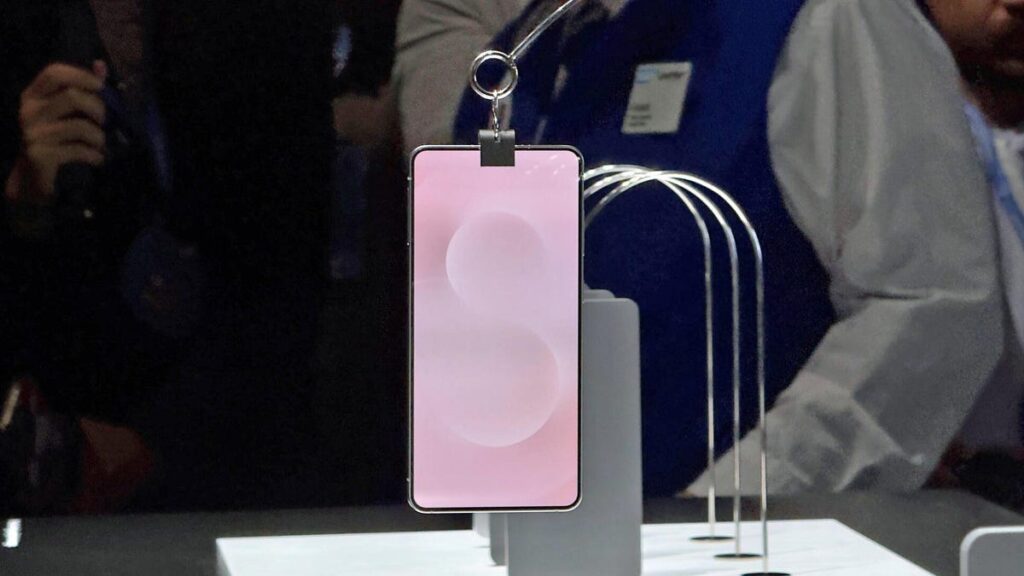After unveiling its Galaxy S25 trio of flagship phones, Samsung ended its Unpacked event with a surprise tease: a fourth handset, the Galaxy S25 Edge. With no details save that this would be thinner than the other three, we’re still left to wonder: who is this slim phone for?
The three main S25 devices all fit specific demographic profiles: the standard $800 S25 is the entry device, the $1,000 S25 Plus is for those who want a bigger phone with higher specs, and the $1,300 S25 Ultra is for those who want the absolute best phone out there. Once we know the S25 Edge’s price, we’ll have a better idea where it falls amid its siblings.
“While we still don’t know it’s exact pricing, we know it will be a premium device with all the bells and whistles, wrapped up in a thinner body… and if that’s true, my intuition is that it’s bound to be more expensive than the existing S25 lineup,” said Nabila Popal, a research director with the International Data Corporation.
By design alone, the S25 Edge is seemingly appealing to users who want to be on the cutting edge. Popal pointed to last year’s Honor Magic V3, a book-style foldable that impressed consumers and media with its ultrathin design that was barely thicker than a conventional phone despite having a massive internal display. Thinness could be a way for phonemakers to distinguish their devices in a highly competitive market, Popal said, or in other words: “Thin is in.”
Read more: Exclusive: How the Magic V3 Became the World’s Slimmest Book-Style Phone
Samsung isn’t alone in developing a thinner phone for the market. Apple has reportedly been working on a similarly thin handset that could arrive this year, which rumors suggest could be called either the iPhone 17 Slim or iPhone 17 Air. Apple has experimented with different-sized phones in the Mini and Plus lines, though it stopped producing the former after the iPhone 13 Mini when consumers didn’t buy many of the smaller-format phones.
Yet that slimmer design will presumably come with limits. Again, until Samsung releases any official specs, we can only speculate as to how the S25 Edge compares with its siblings, let alone other smartphones on the market. Even without specs info for Samsung’s upcoming phone, we can see the S25 Edge has two rear cameras compared to the standard S25’s three.
But since phonemakers have labored to maximize internal space to eke out more battery capacity and fit more components into handsets, reducing that internal volume with a noticeably thinner phone could mean less battery life or fewer features. Though it was seven phone generations ago, overstuffing 2017’s Galaxy Note 7 infamously led their batteries to catch fire.
Samsung could pitch the S25 Edge’s thinner size to consumers looking for style over impressive specs, as the company has done with the Galaxy Z Flip series. For years, the clamshell foldables had lower battery life than comparable S-series phones, finally reaching parity with last year’s Galaxy Z Flip 6 (which has the same 4,000mAh battery capacity as the standard S25). With only two rear cameras, though, the Z Flip 6 appeals with its novel design, not its top specs or features, and the S25 Edge could be pitched similarly.
“I think it’s for people who would primarily use it without a case and would likely enjoy the thinness even though the camera is significantly reduced in terms of features compared to something like the [S25] Ultra,” said Anshel Sag, principal analyst at Moor Insights and Strategy. (The S25 Ultra has four rear cameras: a main, ultrawide and two telephotos.)
Why harp on the cameras and battery? Those are two of the top things that consumers prioritize when looking for phones (alongside price and storage capacity) as repeated surveys show, from CNET’s own survey late last year to this Deloitte report from March 2024.
“There is definitely research that shows people want phones that are easier to hold, but even more compelling sales data that small phones just don’t sell: people want big screens and long battery life,” said Avi Greengart, president and lead analyst at Techsponential.
While the S25 Edge does look like it will have a larger screen, Greengart still wonders what Samsung did to reach the phone’s thin form factor.
“The other questions are durability — will Zach at Jerryrigeverything snap it in half?” Greengart said, referencing the YouTube channel famous for stress-testing phones. “What other features are compromised to hit the form factor (is there a wireless charging coil in there?)? Will [it] still feel impossibly thin once you put it in a case?”
So why did Samsung work on a flat phone that could be more limited than its fuller-featured siblings? They could be developing the S25 Edge as a testbed for other smartphone development, Sag theorized.
“Some of these thinness exercises might also be a way for them to experiment with making thinner foldables,” Sag said. “Otherwise there’s just too many compromises that have to be made for the sake of thinness whether that’s Cooling or battery or ultrasonic fingerprint sensors or front-facing cameras… The list goes on.”
Read the full article here




